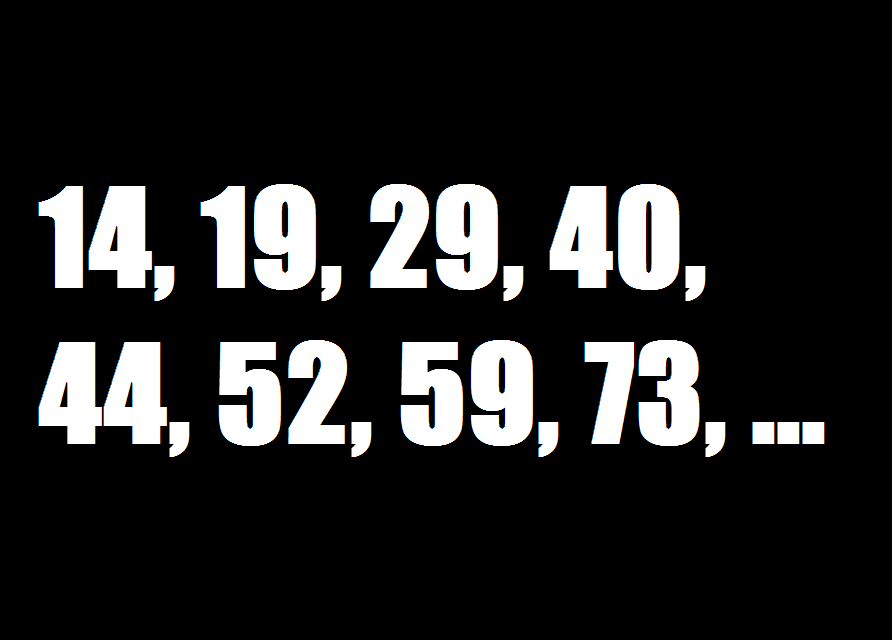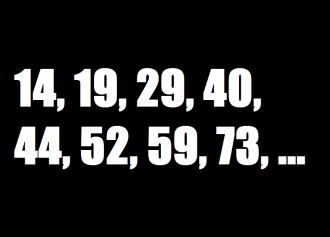What is the next number in this series?
Look at the series (14, 19, 29, 40, 44, 52, 59, 73, ?), determine the pattern, and find the value of the next number!Correct answers: 86
The first user who solved this task is Djordje Timotijevic.
#brainteasers #math #riddles

A little girl was out with her...
A little girl was out with her Grandmother when they came across a couple of dogs mating on the sidewalk."What are they doing, Grandma?" asked the little girl.
The grandmother was embarrassed, so she said, "The dog on top has hurt his paw, and the one underneath is carrying him to the doctor."
"They're just like people, aren't they Grandma?" said the little one.
"How do you mean?" asked the Grandma.
"Offer someone a helping hand," said the little girl,"and they screw you every time!"
The grandmother was embarrassed, so she said, "The dog on top has hurt his paw, and the one underneath is carrying him to the doctor."
"They're just like people, aren't they Grandma?" said the little one.
"How do you mean?" asked the Grandma.
"Offer someone a helping hand," said the little girl,"and they screw you every time!"

